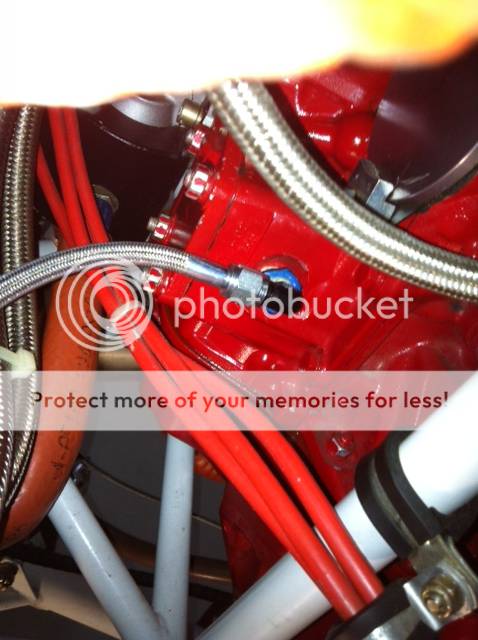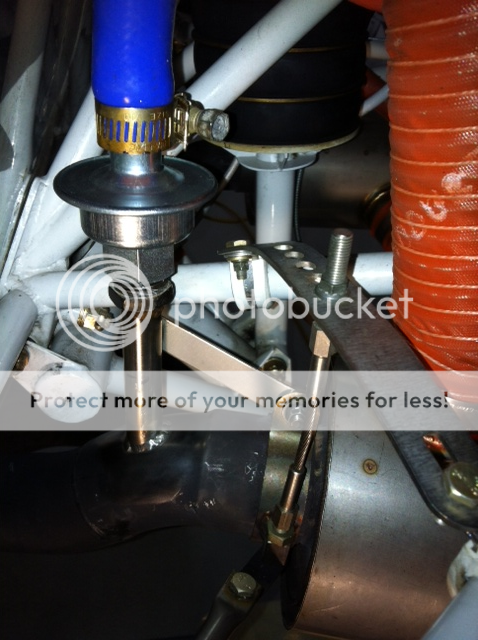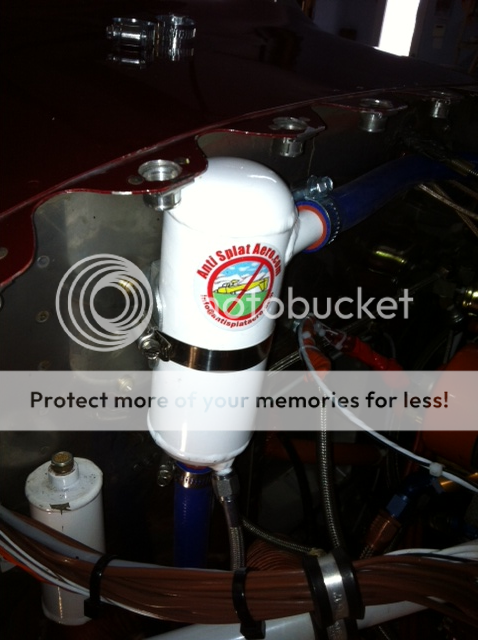[email protected]
Well Known Member
After nearly 500 hours on the tach I have decided to give an oil separator a try... I have been using one quart of oil every 8 hours; not unreasonable but I seem to get most of it as a fine film on the belly.
Recently Anti Splat Aero added a vacuum check valve to their stable of products to go hand in hand with their oil separator setup. Dan H documented a similar valve installation and is in the process of testing for any real world measurable improvements in performance. I am interested in the potential of what I have read and plan to give the check valve a try this spring for SARL events next year.
For now, I have installed the basic oil separator system to address oil consumption and a dirty belly.
I started by test fitting the separator... looks nice in white but it does mar easily.

Once satisfied with the location, I removed the standard aluminum tube routing from the breather flex connection to the termination at the exhaust and reused the end fixed to the firewall.

After finalizing the location on the firewall I drilled the mount and used a little creative wrenching as a second set of hands

With the breather supply and waste dump lines set I routed the provided oil return fitting and braided line to the suggested accessory case plug. The fitting and length of line worked out great.

It took a some extra time to retie and secure everything; no big deal and a nice diversion on a crappy weather day... sadly we are in a prolonged stretch of crappy weather.
Here are a couple of shots of the completed installation.


Afterwords I cleaned and WAXED the belly... did I mention that the weather has been really crappy...
I will report back with results after I get some flight time on the system.
Recently Anti Splat Aero added a vacuum check valve to their stable of products to go hand in hand with their oil separator setup. Dan H documented a similar valve installation and is in the process of testing for any real world measurable improvements in performance. I am interested in the potential of what I have read and plan to give the check valve a try this spring for SARL events next year.
For now, I have installed the basic oil separator system to address oil consumption and a dirty belly.
I started by test fitting the separator... looks nice in white but it does mar easily.

Once satisfied with the location, I removed the standard aluminum tube routing from the breather flex connection to the termination at the exhaust and reused the end fixed to the firewall.

After finalizing the location on the firewall I drilled the mount and used a little creative wrenching as a second set of hands

With the breather supply and waste dump lines set I routed the provided oil return fitting and braided line to the suggested accessory case plug. The fitting and length of line worked out great.

It took a some extra time to retie and secure everything; no big deal and a nice diversion on a crappy weather day... sadly we are in a prolonged stretch of crappy weather.
Here are a couple of shots of the completed installation.


Afterwords I cleaned and WAXED the belly... did I mention that the weather has been really crappy...
I will report back with results after I get some flight time on the system.
Last edited:










